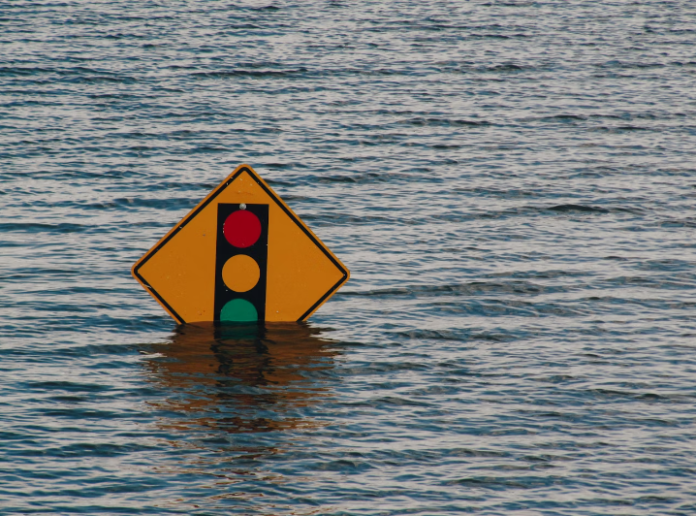Communities worldwide are frequently blindsided by natural and man-made disasters, ranging from hurricanes and earthquakes to industrial accidents and cyberattacks. When these events occur, the aftermath can be devastating, leading to loss of life, property damage, and long-term economic setbacks. Without proper leadership and preparedness, the recovery process can be prolonged and arduous.
In the face of such challenges, community leaders play a pivotal role in disaster preparedness and response. Their ability to plan, communicate, and coordinate can significantly influence how well a community withstands and recovers from disasters.
Let’s explore some practical leadership strategies to help build stronger, more resilient communities prepared to handle any disaster effectively.
1. The Impact of Effective Leadership on Disaster Preparedness
Effective leaders can inspire and mobilize their communities, ensuring everyone is on the same page when a disaster strikes. Leaders set the tone for preparedness, emphasizing its importance and encouraging proactive measures. They coordinate efforts, allocate resources, and make crucial decisions that can save lives and reduce damage.
Key traits of effective leaders in disaster preparedness include decisiveness, communication skills, empathy, and the ability to remain calm under pressure. These leaders are often seen as pillars of strength in their communities, providing direction and reassurance during uncertain times. Their ability to anticipate potential problems and develop strategic solutions is invaluable in disaster management.
2. Developing Comprehensive Disaster Plans
Creating a comprehensive disaster plan is a fundamental step in disaster preparedness. Such plans outline the actions to be taken before, during, and after a disaster, ensuring a coordinated and efficient response. A well-developed plan includes various components such as risk assessments, emergency response procedures, communication strategies, and resource management.
Professionals with an MPH in disaster management are uniquely qualified to develop these comprehensive plans. Their specialized training equips them with the knowledge and skills to assess risks accurately, design effective response strategies, and coordinate with multiple stakeholders. These professionals understand the intricacies of public health and safety, making them invaluable assets in disaster planning and response efforts.
3. Conducting Thorough Risk Assessments and Management
Effective risk assessment requires a systematic approach. Communities should start by mapping out potential hazards, considering both natural and man-made threats. They should then analyze historical data, environmental conditions, and emerging trends to gauge the likelihood of these hazards occurring. Finally, they should assess the potential impact on people, property, and critical infrastructure.
Once risks have been identified and assessed, communities can develop mitigation strategies to reduce their impact. These strategies might include building stronger infrastructure, implementing early warning systems, and establishing emergency response protocols. By addressing risks proactively, communities can enhance their resilience and reduce the potential damage from disasters.
4. Building a Robust Communication Network for Emergencies
Effective communication ensures that everyone in the community is informed about potential threats, knows what actions to take, and can coordinate efforts during and after a disaster. A robust communication network includes various tools and channels to reach all community members quickly and efficiently.
Leaders should establish multiple communication channels, such as social media, text alerts, community websites, and local radio stations, to disseminate information. It is also essential to have a backup communication plan in case primary systems fail. Regular updates and clear, concise messages can help prevent misinformation and panic.
5. Training and Drills: Ensuring Readiness
Regular training and drills are essential for ensuring a community’s readiness for disasters. These exercises help familiarize everyone with emergency procedures, reduce panic, and improve the efficiency of responses. Training programs should cover various scenarios, from natural disasters like earthquakes and floods to man-made crises such as industrial accidents and terrorist attacks.
Simulation drills play a crucial role in preparedness. They allow community members and first responders to practice their roles in a controlled, realistic environment. These drills can reveal weaknesses in plans and procedures, providing valuable insights for improvement. For instance, evacuation drills can help identify bottlenecks in escape routes, while communication exercises can test the effectiveness of alert systems.
6. Strengthening Community Partnerships for Disaster Response
Building strong partnerships with local organizations, businesses, and government agencies is vital for effective disaster response. Collaborative efforts can enhance resource sharing, coordination, and support during emergencies. These partnerships can also provide additional expertise and resources that a single entity might lack.
Community leaders should actively seek out and cultivate these partnerships. Regular meetings, joint training exercises, and shared planning sessions can strengthen these relationships. Establishing clear roles and responsibilities before a disaster ensures a seamless response when one occurs. This collaborative approach maximizes the community’s resilience and ability to recover quickly.
7. Public Education and Awareness Campaigns
Public education and awareness are cornerstones of disaster preparedness. Educating community members about potential risks and the steps they can take to protect themselves increases overall resilience. Awareness campaigns should be ongoing, utilizing various platforms to reach a broad audience.
Educational programs can include workshops, seminars, and informational brochures. Schools can integrate disaster preparedness into their curricula, teaching children essential skills and knowledge. Social media and community websites can disseminate information quickly and effectively, keeping the public informed about potential threats and safety measures.
8. Leveraging Technology for Disaster Preparedness
Advances in technology have introduced new tools and systems that enhance prediction, communication, and response capabilities. Communities can leverage these technologies to improve their preparedness and resilience.
Early warning systems, such as weather alerts and earthquake detectors, provide critical lead time before a disaster strikes. Mobile apps and digital platforms enable real-time communication and coordination among community members and emergency responders. Geographic Information Systems (GIS) can map hazards and resources, aiding in planning and response efforts.
Investing in technology also means ensuring accessibility and usability for all community members. Training programs can teach people how to use these tools effectively. Regular updates and maintenance ensure that systems remain functional and reliable. By embracing technology, communities can stay ahead of potential disasters and respond more efficiently when they occur.
9. Continuous Evaluation and Improvement of Preparedness Plans
Disaster preparedness is an ongoing process that requires regular evaluation and improvement. Communities must periodically review their preparedness plans to identify gaps and areas for enhancement. This continuous improvement cycle ensures that plans remain relevant and effective.
Evaluation should involve feedback from all stakeholders, including community members, first responders, and partner organizations. After-action reviews following drills or real disasters can provide valuable insights into what worked well and what needs improvement. Surveys and community meetings can also gather input and suggestions.
Updating plans based on feedback and new information is crucial. As new risks emerge and technologies evolve, preparedness strategies must adapt. Leaders should establish a routine for reviewing and updating plans, ensuring they reflect current best practices and community needs. This commitment to continuous improvement strengthens the community’s resilience over time.
Conclusion
Disaster preparedness is a multifaceted effort requiring strong leadership, comprehensive planning, effective communication, and community collaboration. By understanding the importance of preparedness, leveraging technology, conducting regular training, and fostering partnerships, leaders can significantly enhance their community’s resilience. Public education and continuous evaluation further solidify these efforts, ensuring that communities are ready to face any disaster. With proactive leadership and a commitment to preparedness, communities can not only withstand disasters but also recover and thrive in their aftermath. Taking these steps today can make all the difference when the unexpected occurs.
Find a Home-Based Business to Start-Up >>> Hundreds of Business Listings.
















































